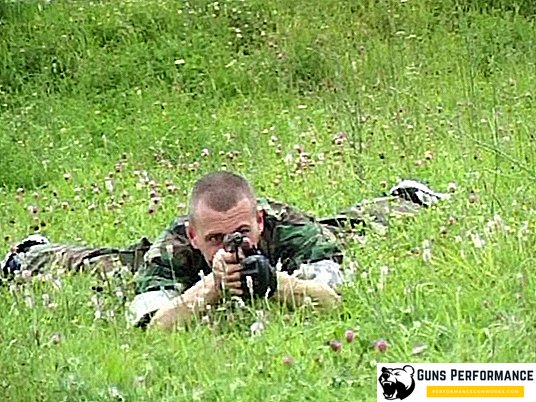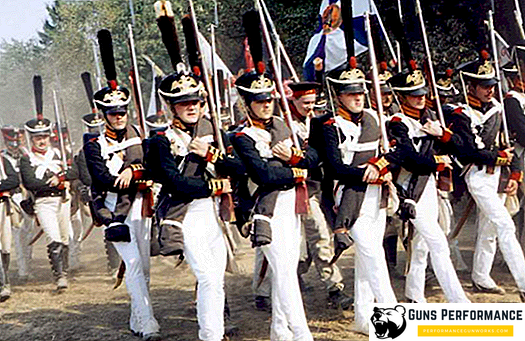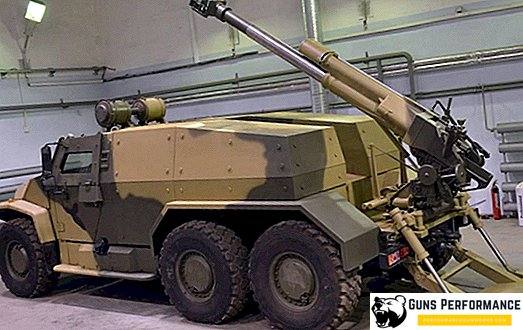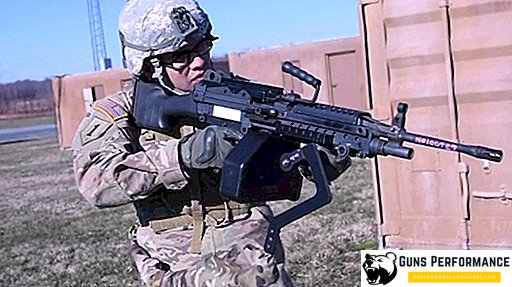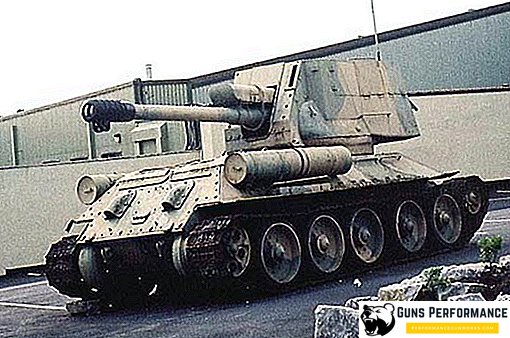The MiG 35 Fighter is the newest multi-purpose fighter, the most advanced representative of the MiG family. It belongs to the 4 ++ generation, which must be superior to fourth-generation fighters, and also successfully resist fifth-generation fighters in aerial combat.
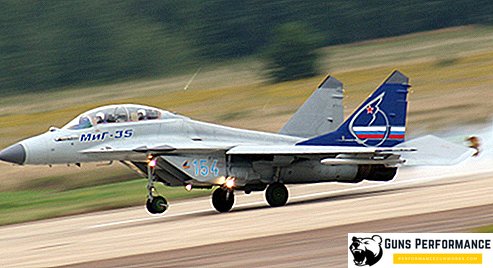
The MiG-35 interceptor is a good alternative to fifth generation airplanes, which are very expensive. In the Russian Air Force, the MiG-35 is considered as a transitional link between the 4th and 5th generations. The new interceptor on the glider is the development of the magnificent Mig-29, from where the price gain actually comes, since the design is already well mastered in production. Deliveries of the MiG-35 fighter to the Russian Air Force began in 2014. The Russian Ministry of Defense intended to form at least two interceptor squadrons. for 2018.

History of creation
The MiG-35 interceptor began to develop in the 2000s. And by 2010, 3 prototypes were already ready, which took part in air shows and were tested.
The fighter was created on the bases of the famous e MiG-29, the production of the new machine was established in a short time. Externally, the MiG-35 is very similar to its predecessor, but at the same time it received a completely new "stuffing". First of all, it is:
- lightweight glider;
- modern avionics;
- Radar AFAR;
- promising types of weapons that were not previously offered for export;
- modern defense complex;
- engines with increased resource.
The new aircraft has demonstrated excellent technical characteristics, including high speed, maneuverability, survivability, advanced weapons. At the same time, the price of the MiG-35 flight hour was almost 2.5 times lower than that of the predecessor MiG-29.

Back in 2005, this fighter was called the MiG-29M / M2. The development of the MiG-35 was based on the achievements obtained in the course of the implementation of the MiG 1.44 MFI program, led by Vladimir Barkovsky, director of the engineering center of the OKB Design Bureau. Mikoyan.
Negotiations on the supply of fighters to the armed forces have been going on since 2010, and by 2014, things have moved. The MiG-35 is included in the State Arms Program of the Russian Air Force until 2020.

Flight performance of the MiG-35
- Crew 1 or 2 people based on the modification of the MiG-35 / MiG-35D
- Length - 17.3 m
- Height - 4.73 m
- Wingspan is 11.99 m
- Wing area - 42 m²
- Normal take-off weight - 17,500 kg, empty - 11,000 kg
- Maximum take-off weight is 23,500 kg
- 2 engines TRDDF with ОВТ "РД-33МКВ"
- Maximum thrust - 2 × 5400 kgf
- Maximum afterburner thrust - 2 × 9000 kgf
- Angles of deflection vector deviation: ± 8 ° in any direction, ± 15 ° in the vertical plane
- Thrust vector deviation rate is 60 ° / s
- Engine weight is 1055 kg.

Flight TTH:
- Maximum speed at the ground - 1400 km / h
- Maximum speed at an altitude of 2400 km / h
- The practical range of the aircraft with PTB - 3000 km
- Practical range without PTB - 2000 km
- Flight duration - 2.2 hours
- Practical ceiling - 17,500 m.
- Thrust-to-weight ratio with a maximum take-off weight of 0.77
- Thrust-to-weight ratio at normal take-off mass - 1.03
- Wing load with maximum weight - 618 kg / m²
- Wing load with normal take-off weight - 468 kg / m²
- Maximum operating overload - 9 g.

Armament:
- Built-in 30 mm gun GSH-30-1 with 150 rounds ammunition
- Suspension points: 10
- Combat load - 6500 kg
- URVV short range R-73
- URVV medium-range RVV-AE and R-27
- Anti-ship missiles Kh-35 and Kh-31A
- X-31P anti-radar missiles
- URVP: NAR, X-29, X-25
- Missiles air class X-29L, X-29T, X-25ML, RVV-AE, R-27
- Adjustable and free-falling bombs, aircraft mines.

Avionics:
- Radar with AFAR Zhuk-A
- The maximum detection range of a ground target is up to 60 km.
- Maximum detection range for aerodynamic targets up to 200 km (for export up to 148 km)
Tasks and Goals
The multipurpose MiG-35 front-line aircraft was created to destroy ground, air and surface targets night and day in simple and complex weather conditions with passive and active electronic countermeasures of the enemy.

The main tasks of the MiG-35:
- interception of air targets;
- gaining air superiority;
- isolation of the battlefield;
- the suppression of air defense weapons;
- direct aviation support;
- striking at sea targets.
The main combat characteristics of the MiG-35D and MiG-35 compared with the MiG-29:
- maneuverability;
- extended flight range;
- high combat survivability;
- increased reliability.

Design features of the MiG-35
To improve the combat effectiveness of the fighter, his avionics were significantly improved. That is what distinguishes the car from other aircraft of the new unified MiG-29K / KUB and MiG-29M / M2 family. Moreover, the differences represent an evolutionary character: the proportion of devices and systems of the fifth generation from model to model increases.

In terms of the integration of technological solutions related to the fifth generation of fighter jets, the MiG-35 has no equal among European analogues.
- It was possible to focus on electronics thanks to the excellent aerodynamic concept of the MiG-29. When designing the MiG-35, it was possible to increase the internal supply of fuel by 50%, and also to increase the combat load twice. As a result, the weapons and range of the MiG-35 increased to the level of heavy fighters.
- Maximum take-off weight increased by 30%, reaching 23.5 tons. To maintain and improve the flight performance, the design has undergone a number of improvements: for example, the structural strength has been increased and the wing bearing properties have been improved.
- Updated powerplant. It was changed to RD-33MK engines with a smokeless combustion chamber, increased by 10% with a great resource, and increased reliability. As an optional solution, upgraded RD-33s are installed, with an all-view deviation of the thrust vector.
- The MiG-35 cabin is equipped with the latest generation of onboard electronic equipment, which is built on the principle of open architecture using the multiplexed data bus according to the MIL-STD-1553B standard. This ensures the versatility of combat use of the aircraft, as well as simplifies the integration of new types of weapons and equipment of Russian and foreign production, including suspension. In the management of weapons applies the principle of HOTAS. At the heart of the information and control field of the cabin are three widescreen multifunction LCD 6 by 8 inches, as well as wide-angle HUD.
- The MiG-35’s armament control is based on the newest radar with the Zhuk-AE AFAR, the OLS-K optical radar station, and the OLS-UEM optical radar station, our NTSIPI target-tracking system, indication and aiming system characteristics correspond to the onboard systems of the fifth generation aircraft. The optical-location station with laser, television and infrared sighting equipment is made using space technologies not previously used in aviation. This allows to increase the survivability of the aircraft and the effectiveness of combat use.
- The technology of anticorrosive protection of the main systems and the airframe is used, which greatly facilitates the use of the aircraft in the tropics.
- For the MiG-35, a complex of technological and technical solutions has been developed, ensuring complete autonomy of the base. This is, for example, an onboard oxygen producing station.

Savings and readiness
The service life of the MiG-35 is at least 40 years. Resource cars on the fly more than 6 thousand hours. Significantly increased the reliability of the aircraft, its avionics and engine. The number of units with a limited resource, reduced by almost 3.5 times compared with the fighters of previous versions.

The radically improved performance of the MiG-35 is a serious trump card in the competition for the global market, where it is more oriented towards aircraft with a low life-cycle cost. Among other factors, this trend is associated with a fairly rapid increase in the cost of aviation fuel.
The MiG-35 is the best solution for the Russian Air Force, as well as for aviation of other countries that have different early versions of the MiG-29 in service. According to some estimates, about 250-350 MiG-35 multifunctional fighters worth approximately $ 10-12 billion will be delivered to the Russian Air Force and foreign customers by 2020.



